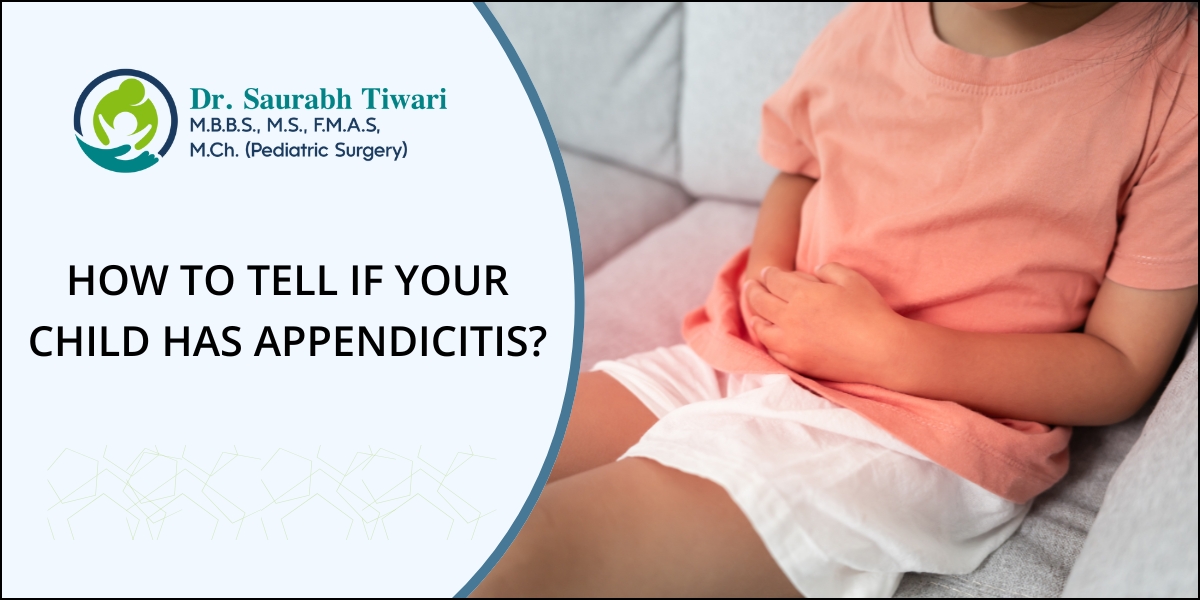As a parent, few things are more worrying than your child complaining of a stomach ache. While most tummy troubles are harmless and pass quickly, some require immediate medical attention. Appendicitis—the inflammation of the appendix—is one of them. Recognizing the signs early is crucial, as a ruptured appendix can be life-threatening.
The Classic Sign: The Wandering Pain
The most distinctive clue of appendicitis is how the pain behaves. It often starts differently than a typical stomach bug.
- It Begins at the Center: The pain usually starts as a dull ache around your child’s belly button.
- It Migrates to the Right: Over several hours (typically 12-24 hours), the pain shifts and localizes to the lower right side of the abdomen. This spot is often referred to as McBurney’s point.
This “migrating pain” is a classic red flag that differentiates appendicitis from other common illnesses.
Other Key Symptoms to Watch For**
Beyond the specific pain pattern, be vigilant for these accompanying signs:
- Fever and Chills: A low-grade fever that may worsen as the condition progresses is common.
- Loss of Appetite: A sudden refusal to eat, even favorite foods, is a significant indicator.
- Nausea and Vomiting: While these can occur with many illnesses, in appendicitis, vomiting often happens after the abdominal pain begins.
- Changes in Behavior: Your child may be unusually irritable, lethargic, or want to lie very still. Movement, coughing, or bouncing in the car can make the pain much worse.
- “Gassy” Feelings without Relief: Your child might feel bloated or gassy but find no relief from passing gas.
Appendicitis vs. Common Tummy Ache
It can be tricky to tell the difference. A general stomach virus or indigestion often causes crampy, widespread pain that comes and goes. With appendicitis, the pain is usually constant, worsens over time, and becomes sharply focused in one spot.
What to Do If You Suspect Appendicitis
Trust your instincts. If your child’s symptoms align with those described above, do not wait.
- Do not give them laxatives or pain medication, as this can mask symptoms or worsen the situation.
- Do not offer food or drink.
Prompt diagnosis through a physical exam, blood tests, and sometimes an ultrasound is essential. If it is appendicitis, the standard treatment is an appendectomy—surgery to remove the appendix—which is often a straightforward procedure when caught early.
Your attentiveness as a parent is the first and most important line of defense. When in doubt, err on the side of caution and seek professional medical evaluation.
Dr. Saurabh Tiwari – Pediatric Appendicitis Specialist in Mumbai
For parents in Mumbai seeking expert care, Dr. Saurabh Tiwari is a renowned Pediatric and Minimal Access Surgeon specializing in conditions like appendicitis. With extensive experience in diagnosing and treating abdominal emergencies in children, Dr. Tiwari is skilled in performing advanced laparoscopic (keyhole) appendectomies. This minimally invasive technique results in less pain, smaller scars, and a faster recovery for your child, ensuring they receive the best possible surgical care with compassion and expertise.
FAQs About Appendicitis in Children
1. What are the first signs of appendicitis in a child?
The first signs are often a dull pain around the belly button that later moves to the lower right abdomen, combined with a loss of appetite and mild fever.
2. Can a child with appendicitis poop?
Yes, a child can sometimes have a bowel movement with appendicitis. However, they may also experience diarrhea or constipation. The key symptom is the persistent, worsening abdominal pain.
3. Where is appendix pain located?
Pain typically starts near the belly button and then migrates and settles in the lower right quadrant of the abdomen.
4. At what age is appendicitis most common?
Appendicitis is most common in children and teenagers between the ages of 10 and 19, but it can occur at any age, even in young children.
5. How do doctors test for appendicitis?
Doctors use a physical exam (pressing on the abdomen), blood tests to check for infection, and imaging tests like an ultrasound or CT scan to confirm the diagnosis.




